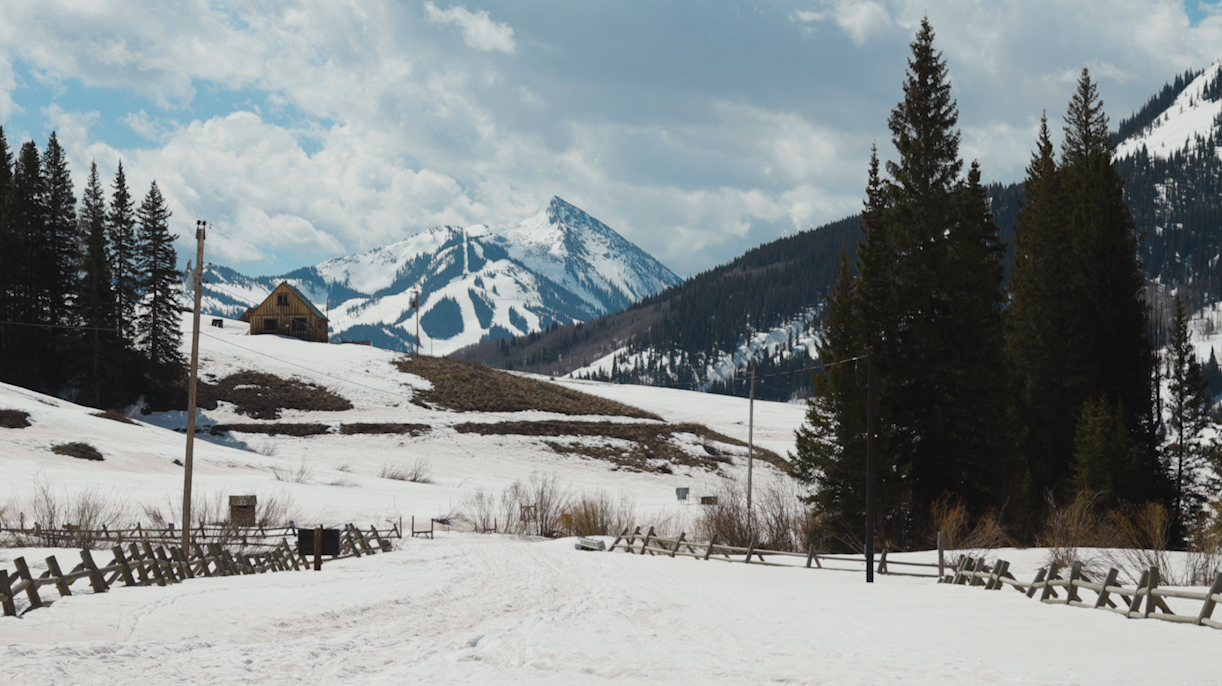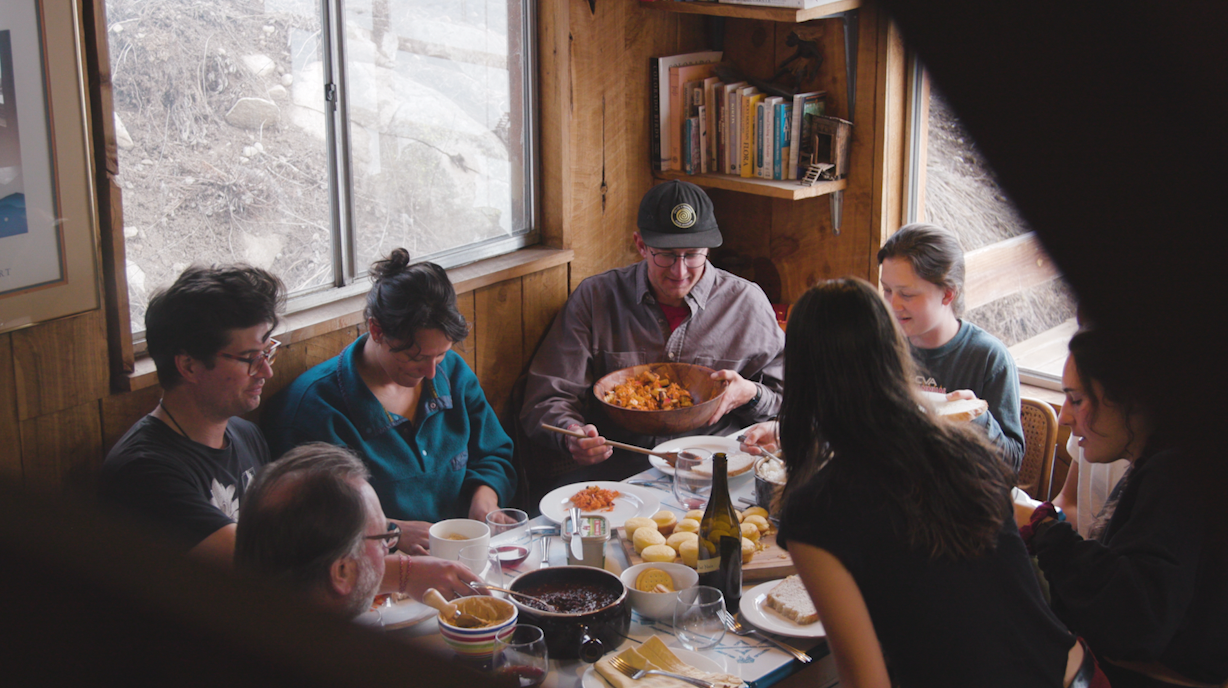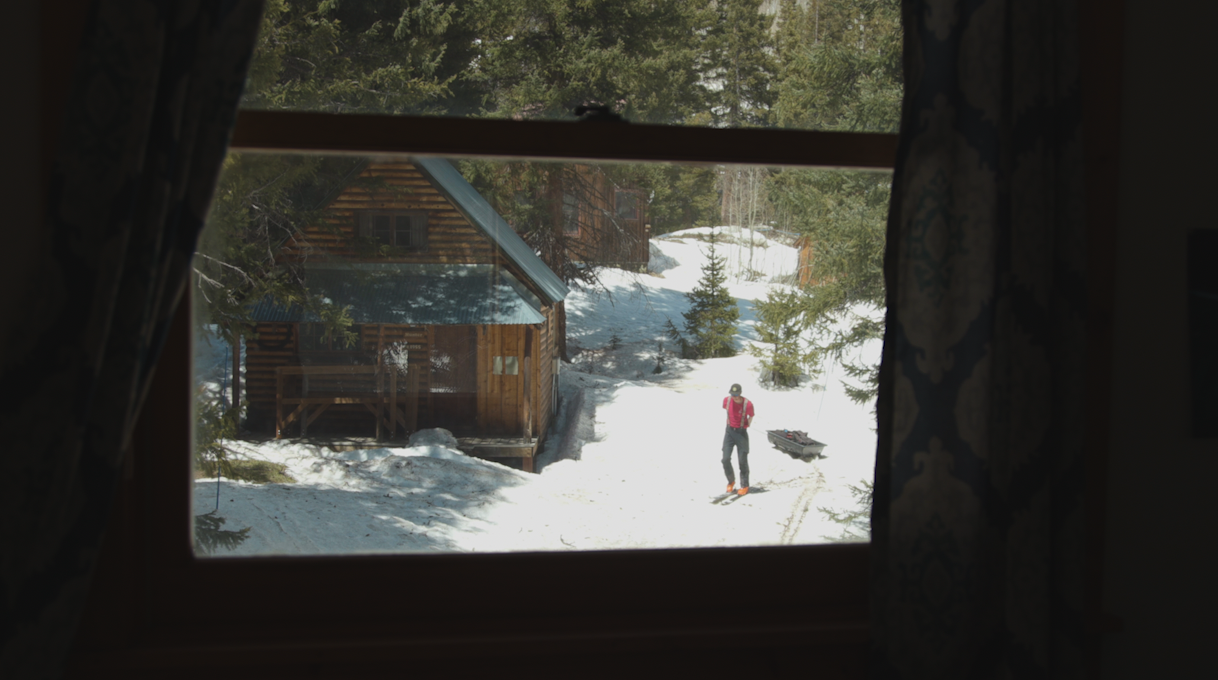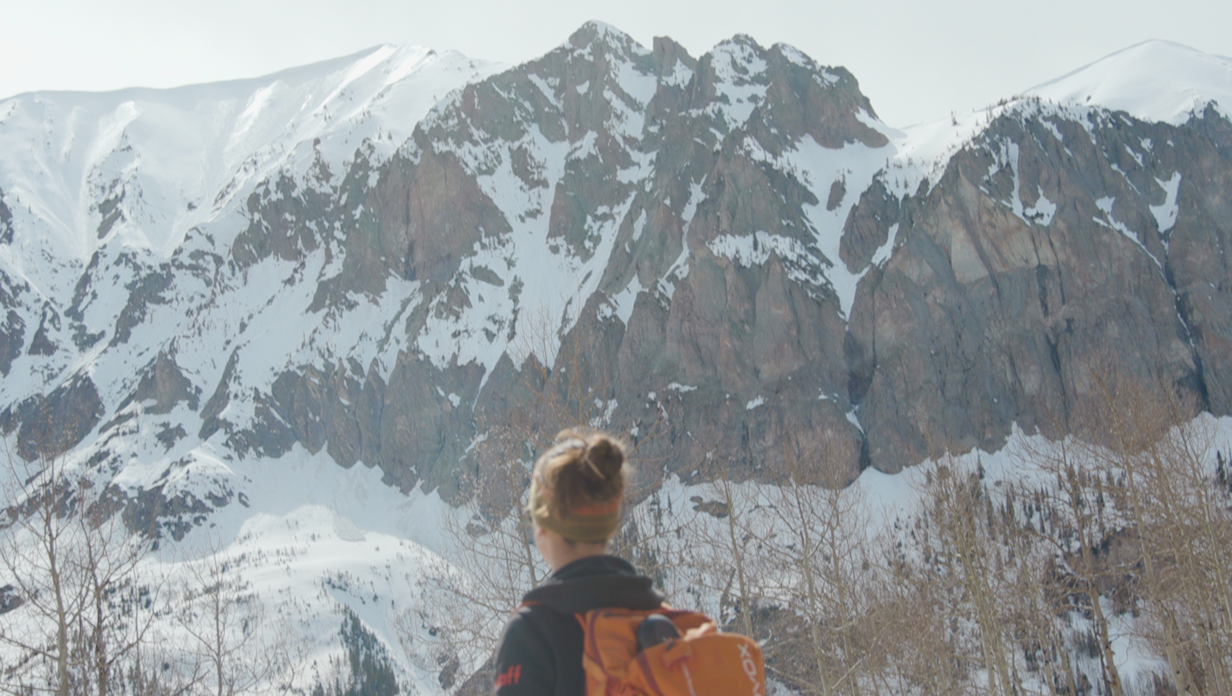Facing climate change in one of Colorado’s most remote wintertime laboratories

Rocky Mountain PBS will be covering the Rocky Mountain Biological Laboratory as part of production for "Colorado Experience" season 11, set to premiere this fall. Stay tuned for more stories on the topic.
GOTHIC, Colo. — As the spring snow begins to melt in the Elk Mountains, researchers eagerly await to catch a glimpse of Stonehenge.
Stonehenge, by the way, is a marmot. As are Spoon and Plus Sign. They are just three of the hundreds of marmots living near the Rocky Mountain Biological Laboratory in Gothic, Colorado.
Scientists have been following marmots such as these as part of the renowned RMBL Marmot Project, a 62-year study that has offered invaluable insight into not only the lives of marmots, but into the decades-long progress of climate change as well.
Yet more than just marmot homes are snowed-under. A typical winter in Gothic will dump around 40 feet of snow, enough to cover a one-story building according to RMBL.
This is where a small team of hardy homekeepers — the RMBL winter caretakers — step in.
Five winter caretakers, alongside occasional early-season researchers like those on the famed RMBL Marmot Project, are among the isolated few who not only maintain the mountain laboratory, but also collect valuable phenological and climatological data central to state and nationwide climate change research.
Gothic is tucked within the many snow-capped peaks dotting Gunnison County. In the summer, it explodes with colorful flora and fauna, attracting thousands of visitors to the esteemed laboratory, which has been welcoming scientists for almost 100 years.
Yet in the winter, one would struggle to find a single blade of grass. Snow blankets the small town, and with no snow plows or snow removal, even the smallest trips require skis or snowshoes.
Without specialized snow footwear, walkers find themselves knee-deep in snow with each step (a struggle referred to as “postholing”).
Caretakers occupy a few of the over 60 different cabins available for boarding, the majority of which are shuttered and secured during the winter. There is running water, though only during certain times of day (and weather permitting, for bad storms sometimes necessitate turning off the taps).
According to Amelia Litz, a winter caretaker finishing her first winter in Gothic, what normally would be a one-minute walk to take out the trash becomes a 10 to 15 minute trek.
Getting groceries is no walk to the corner store either.
Those who remain in Gothic become completely cut off from the next nearest town, Crested Butte. In the summer, visitors can travel from Crested Butte to Gothic in around ten minutes by car. In the winter, this single connecting road is snowed under and unplowed.
In order to reach Crested Butte, travelers (without snowmobiles) must Nordic ski about three-and-a-half miles over the snow-covered road.
The experienced skier might make it one-way in about forty minutes; the inexperienced skier might be looking at a two to three hour commute.
Sophia Todorov, a winter caretaker finishing her second winter in Gothic, has become experienced enough to brave the trip at least once a week to grab fresh produce and the milk she needs for the cappuccinos she has been learning to make.

A trip to Crested Butte, the nearest town to Gothic, requires skis, a big backpack and sometimes a sled.
Photo: Chase McCleary, Rocky Mountain PBS
Growing up in Southern California, snow was completely foreign for Sophia Todorov before arriving for her first Gothic winter with the Marmot Project back in 2020.
She joined while still an undergraduate at UCLA (visitors to Gothic are typically P.h.D. students), studying the social networks of marmots and the significance of marmot mass gain for survival.
After learning to ski, adjusting to the mountain lifestyle and forming friendships with the marmots and co-workers alike, she decided to continue post-graduation as a RMBL winter caretaker.
Two years later, Todorov still enjoys the snowy solitude and natural beauty of Gothic in the winter, despite what friends and family might wonder.
“Yeah, I’ve gotten The Shining thing a lot,” said Todorov. “And actually, I’d never seen The Shining until this fall… so that was fun to watch.”
Todorov said the lab’s natural beauty overshadows any irrational Stephen King-inspired fear, and instead she has found her alone time to be grounding and developmental.
“I’ve learned how to be comfortable being alone and isolated,” said Todorov. “I definitely became more self-sufficient.”
Todorov is now an avid back-country skier and sourdough-bread baker, and she expects to stay a third winter next year.
Despite the conditions, Todorov is far from a hermit. She stressed the strong social and support community that exists between the caretakers.
Todorov’s neighbor, Benn Schmatz, has been a caretaker for three winters, and both Todorov and Schmatz spend much time skiing, watching movies and socializing while working together.

Winter caretakers and researchers with the RMBL Marmot Project gather for a potluck dinner.
Photo: Chase McCleary, Rocky Mountain PBS
“We manage about 55,000 square feet of space and seventy buildings, give or take,” said Schmatz. “If you count the outhouses, maybe it’s more like 100.”
Schmatz, who also works as a Facilities Manager and Science Support Technician during fair weather seasons, is a self-proclaimed “flat lander” from Kansas, but after graduating from the Colorado School of Mines, he decided to remain in the Rocky Mountains.
Before joining RMBL, Schmatz (perhaps fittingly) worked as a caretaker and tour guide at The Stanley Hotel in Estes Park.
Caretakers’ tasks include everything from general upkeep of labs and facilities to monitoring water purification to taking snow measurements. They are also responsible for winterizing and re-opening cabins between each season.
“There’s a decent amount of science that actually happens in the winter as well,” said Schmatz, “and the caretakers play a part in the scientific work that happens in the winter.”
Litz, now Dr. Litz after having successfully defended her P.h.D. in April, is a Northwestern University biologist who has been studying solitary ground-nesting bees, of which there are many at RMBL.
Following in the footsteps of her advisor, Litz decided to visit RMBL in 2019.
She fell in love with Gothic, and wanting some peace and quiet to write her dissertation, she applied to be a winter caretaker for the 2023-24 season.
“It’s hard to find a time in your life where you really don’t have to be anywhere for eight months, and I don’t know if there’s ever going to be a time in my life again where I have that luxury,” said Litz.
“And then luckily, he was working remote. So it worked out.”

Schmatz (pictured) pulls a sled of tools needed to re-open shuttered cabins for the coming summer.
Photo: Chase McCleary, Rocky Mountain PBS
“He” is Reed Bankendorf, a senior spatial data specialist and senior botanist with the Chicago Botanic Garden. Bankendorf is also Litz’s boyfriend.
The couple met in grad school, brought together by the cupid’s arrow that is the complicated statistical programming language, R. The study buddies’ relationship extended throughout Litz’s time at the lab, during which Bankendorf would make summer trips to visit.
When given the opportunity of spending a winter in RMBL, Bankendorf agreed, though the young couple were both cautioned about the commitment.
“They asked us about our relationship, because there have definitely been relationships that have fallen apart out here,” said Litz.
However, Bankendorf’s delicious homemade breakfasts, a litany of board games and sufficient time apart during the day has made the winter more than bearable, said Litz.
Bankendorf works out of a building down the street from their cabin, where he works with “one of the best office views in the entire world” and plenty of “liquid drum and bass, and downtempo house and other sorts of wintertime music.”
Litz also learned how to ski, and both have found the work to be manageable and enjoyable.
Litz and Bankendorf described broccoli and milk runs with eighty-liter backpacking packs and sometimes a sled for larger grocery hauls.
These limitations have in turn helped the couple better understand moderation, one of many lessons they will take away from their winter experience.
“I feel like I have a better understanding of how much of things to buy… not to go overboard,” said Bankendorf.
Litz, now a keen baker, plans on baking before buying when she returns to city life.
Caretakers and visiting researchers were grounded by another unexpected and often underappreciated luxury: terra firma.
One described walking on solid sidewalks like “stepping off a moving walkway” after spending months on cross-country skis. Another researcher compared the feeling of walking without snowshoes to, “stepping out of [swimming] fins or clown shoes.”
While such challenging climates may seem frustrating, Gothic winter residents take them as valuable learning opportunities and as reminders of the world surrounding them.
“Your day-to-day life is governed by the natural forces, so we have to work more with Mother Nature than against it,” said Schmatz. “That also puts you more in tune with it.”
“...any time you try and move against, you feel it… and so you learn quickly to just move with it. And that’s a very great feeling.”
This heighteed appreciation for nature came with a more acute awareness of climate change as well.
“Living in Gothic, you really see the seasonal variability,” said Todorov. “It really puts it into perspective of how fragile our environment is.”
This qualitative data is backed by the quantitative. Now famed-Gothic “hermit” Billy Barr’s meticulous snow-level logging have proved essential for understanding the warming climate, and Litz has been studying climate change’s impact on the phenology of solitary ground-nesting bees.
RMBL’s renowned Marmot Project offers valuable insights into climate change as well.
Dr. Dan Blumstein, the principal investigator of the RMBL Marmot Project, planted his ski poles into the wet snow quickly thawing in the April sun. He took out a pair of black binoculars and scanned the surrounding mountainscape.

Todorov stands below Gothic Mountain, a daily view for her and Gothic residents.
Photo: Chase McCleary
“So right now, I see a marmot, and he just came out of a hole,” said Blumstein, his gaze fixed steadily on a small black dot sitting against the enormous white canvas that was Gothic Mountain in the winter.
“This is what we do in the spring. We go around and we wait for marmots to emerge from hibernation,” said Blumstein. He placed his binoculars back in his pack, trading them for a pair of cross-country skis strapped to his back.
Despite a 60 degree spring sun shining down on the town, there was still approximately five feet of snow between Blumstein and solid ground. Caretakers and student researchers on the Marmot Project must traverse Gothic on skis or snowshoes, a challenge which contrasts the University of California, Los Angeles campus where Blumstein’s marmot researchers (known as “marmoteers”) study.
Blumstein described climate change as creating “mismatches,” causing the evolutionary habits of creatures, like marmots, to fall out of tune with the seasons and seasonality.
Marmots, for example, have learned to emerge from hibernation at specific windows of time. If they come up too early, there may not be enough food; if they come up too late, they may be at a greater risk to predators.
The Marmot Project at RMBL is the second-longest continuous study on free living mammals in the world, second only to Jane Goodall’s research with chimpanzees.
Blumstein and his team have more than six decades of data to reference, making this study incredibly valuable for better understanding not only the behavioral tendencies of marmots, but of many like-species as well.
However, Blumstein argues that contemporary environmental education must go beyond field research.
“Proper environmental education develops an appreciation of nature in life, but also educates people into the value of nature,” said Blumstein, “and more importantly, empowers them to help affect and create laws that protect nature.”
Many, including Schmatz and Todorov, agreed that one way to better grasp the significance of such education and action around the environment is to simply get outside.
“Coming from such an urban place, I’ve never felt that connection to my environment, but I’ve really gotten that here,” said Todorov. “I would just encourage people to get outside and get connected with your environment as much as possible.”
“It really puts into perspective what it means to be alive on this planet.”
Chase McCleary is a multimedia journalist at Rocky Mountain PBS. Chasemcleary@rmpbs.org
To see a behind-the-scenes video of how Chase produced this story, click here.
